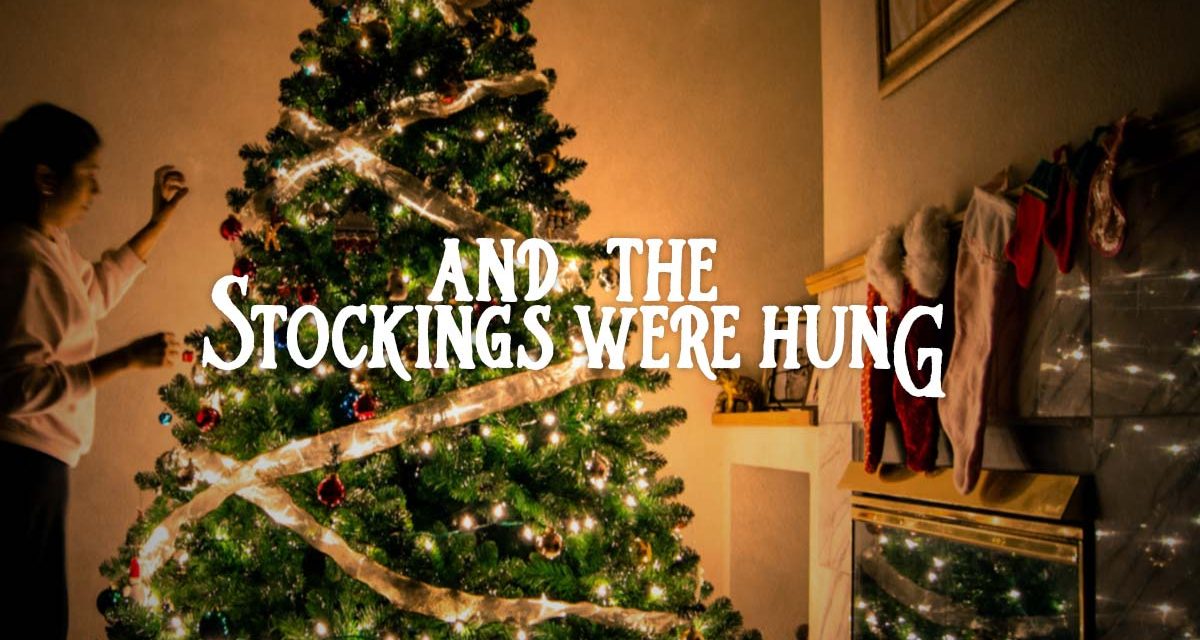It’s that time of year when family traditions abound – maybe more than any other time of year. Families haul out the artificial Christmas tree or go out with the family to cut down a fresh tree, hang wreaths, bake the Christmas cookies, watch their favorite Christmas show, read the Christmas Story from Luke 2, attend Christmas Eve service at their local church. Don’t forget to hang the stockings!
From where did this stocking tradition come and what has made it popular today? I love to read about traditions and their origins, and this is an interesting one. You can’t talk about this tradition without mentioning St. Nicholas or Bishop Nicholas. There are different versions of the story, but it goes something like this: Nicholas, a real person, was born in 280 AD in Lycia of Asia Minor. Nicholas inherited his parents’ wealth when they passed, and used it to truly bless those less fortunate than he. Nicholas became a priest and was given the title Bishop of Myra. He had a heart for those less fortunate, and traveled around helping people in need. He liked to give his gifts late at night so his generosity could remain anonymous. In the town of Patara lived a widower with 3 daughters of marrying age. The man was so poor that he had no dowry for his daughters; there was no chance of marriage for them. Nicholas heard of this family and crept to the window of their cottage and tossed a bag of gold coins into the home. Some of the coins went into the stockings that were hanging by the fireplace to dry after being washed. The daughters found the coins the next morning and gave them to their father. He could now offer a dowry for his daughters to marry.
There are similar versions of this story where Nicholas came back several nights in a row to leave the coins or Nicholas left balls of gold or the gold was dropped down the chimney. Whatever version you prefer, they all involve a generous man and stockings drying by the fireplace. Some of our stocking traditions today stem directly from that story.
In 1823, a man named Clement Clarke Moore wrote a well-know story that popularized hanging Christmas stockings – “A Visit from Saint Nicholas” or “The Night Before Christmas.” The story reads like this, “The stockings were hung by the chimney with care, In hopes that St. Nicholas soon would be there.” Stockings hung for Christmas originated with hanging one’s own sock (s), or maybe dad’s sock because it was bigger and could hold more gifts. As time went on, stockings became more personalized and special for the holiday; and stockings aren’t always hung by the fireplace either. They hang from the bottom of a tall shelf at my house, but might be hanging from the staircase rail, a wall or from a door knob. The location for hanging stockings has changed, and so has its contents, in many cases.
In some countries stockings (shoes in the Netherlands) are filled with all of the gifts a child receive that year (perhaps just be one gift), or may be stuffed with smaller gifts while larger gifts are found under the Christmas tree. A lump of coal might even be left in the stockings of children who have behaved badly. Although it isn’t clear where this began, Sicily, Holland, and England each have a version of the origin of this tradition. Children of wealthier families in England would get toys and candy, while children of the poor might get a piece of coal. Not intended to be a good gift, a piece of coal in 19th century England was probably greatly appreciated.
You probably won’t find gold in your stocking this year, but you might find coins or oranges. An orange is said to represent the ‘gold ball’ mentioned in one version of the legend. Interestingly, Ruth (one of our consultants) tells me that the word in Mandarin (Chinese) for tangerine (mandarin orange) is similar to the word for ‘gold’ – ‘kam;’ and the tangerine is considered a symbol of abundance and good fortune. Oranges were also given at Christmas during a time in history when fresh fruits were expensive and difficult to acquire – so a real treat at the holidays.
What is your Christmas stocking (or shoe) tradition? Deb hangs about 20 stockings at her home for children and grandchildren. Ruth received oranges and whole nuts in her stocking growing up. As a child, Gina didn’t have stockings, but married into a family with this tradition, and they carry it on with their own children. When we were children, we attended my dad’s employee Christmas party and were given a pre-made mesh stocking full of hard candy and plastic toys – these were the stockings we hung up at Christmas. When I had a family of my own, I made personalized stockings for my husband, children in-laws, grandparents, and friends – as many of you do. These are still hung up at Christmas time – as decoration until Christmas Eve and hold gifts for Christmas morning. My children are adults and still look forward to going through their stockings on Christmas morning.
The tradition of stockings started with an act of generosity from a very kind man toward someone in need. More important than the tradition would be the intent, and what we should strive for this Christmas season. What acts of kindness, above and beyond the usual, can you show to those around you or even to total strangers? Simple things that can be modeled and learned by the next generation – holding a door, giving a meal, helping an elderly neighbor tidy up their house, carrying groceries, raking a yard, fixing something that is broken, or inviting someone over who has no family with whom to share the season – you might just change a life. Acts of generosity have no price tag and can be much more precious than the gold placed in the stockings of that needy family long ago.





